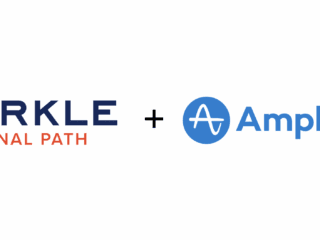We’ve recently been dealing with a bunch of Google App related questions due to the movement of one of our clients to a Google Apps based operating environment. With us moving over to Google Apps in the near future as well, we figured now would be a good time to start looking at some of the issues people may be having switching over.
Full disclosure: we are an Apps reseller, so it is in our interest to have people switching.
One of the first complaints we heard when switching our aforementioned client to Google Apps was that the employees didn’t want that sudden change in their working interface. Transitioning to web based programs can be jarring for some people, both due to a few popular features of desktop clients (one common complaint we heard was the lack of a preview pane in Gmail) and having to go through the process of loading your browser in order to check your mail. Fortunately there are a bunch of solutions for this, including creating shortcuts to Google Apps on your desktop via Chrome and integrating Gmail and other open source clients such as Thunderbird/Firebird, but for the MS Exchange crew—and lets face it, that’s a lot of you—Google has provided a tool for syncing Google Apps and Outlook/Exchange.
This allows you to:
- Receive all of your email in outlook (if you want)
- Sync all contacts from outlook into Gmail and vice versa.
- Sync events between Calendar and Outlook.
It also supports the importation of archived folders (archive.pst) and Microsoft Exchange Profiles, so that you don’t lose any archived data.
Of course, this is not a perfect solution (Google themselves refer to it as a tool to “ease migration” from Exchange to Google Apps) and currently not supported are tasks, notes, journals, or public folders, which may turn some off of the idea entirely.
Installation is fairly effortless. In Google fashion, it’s an installer that walks you through each step in setting up your synced outlook profile. Once loaded the interface is no different than normal outlook, so no real loss there. The big change is that now your email, contacts, and calendar are all available through Gmail, which sure beats having to log into the awful Exchange web access system.
Some Q&A from Google:
Why would I want to keep Outlook when I switch to Google Apps Premier Edition?
While IT Admins quickly understand the cost savings of using Google Apps, large businesses might opt for a phased approach when rolling Google Apps out to their users since the cost of retraining users can become high. Google Apps Sync for Microsoft Outlook allows IT to immediately save on infrastructure costs, while letting them spread out deployment and training efforts thereby allowing users to adopt Google Apps web interface at their own pace.
Can I run a pilot of Google Apps and keep Exchange at the same time?
Yes, Outlook allows you to access multiple accounts at the same time. Google Apps Sync for Microsoft Outlook will automatically set up a Calendar and Contacts account to Google Apps, and help you set up an e-Mail IMAP account as well; however you can still keep your Exchange account active at the same time. This is useful for migrations, account transitions, or even for piloting Google Apps without having to get rid of your Exchange environment immediately.
Bonus question:
Exchange Syncs with my blackberry, can Google Apps?
Yep. Using Google Apps Connector for BlackBerry Enterprise Server, a software component that is installed on a Blackberry Enterprise Server(BES) for Microsoft Exchange. It connects with Google, authenticates using OAuth and syncs using Gmail Sync, Calendar GData & Contacts GDatanterfaces
Again installation is fairly easy, requiring only that you install it on your BES server, create a profile in the Google Apps Profile Editor, and then do the rest of your set up (add users, set activation passwords, apply policies, etc.) in the BlackBerry manager.
There are some limitations, however. It currently:
- Does not support tasks and notes on BlackBerry devices
- Current calendar only includes one-way synchronization from Google Calendar to your mobile device (and not vice versa). But hey folks, a fix is coming soon.
- You still need exchange server
All in all these are pretty good integration tools for a product that’s only been out since July, and while there is room for improvement, it shows that Google is at least trying to help ease the transition from desktop to cloud applications—something that many are now considering an inevitability.












